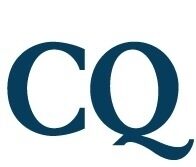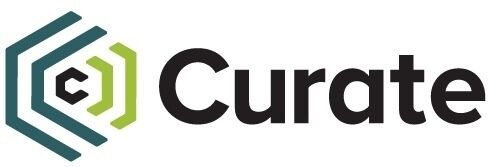
10 Pertinent Questions about the Second Round of PPP Funding
by Annie Xiao, FiscalNote
The answers to everything from who can apply, to how to apply, to what happens if your PPP application is denied

After the Small Business Administration (SBA) announced that the first Paycheck Protection Program (PPP) funding had run out in less than 14 days, many small businesses were left to face a difficult dilemma between operating at a loss or preparing for permanent closure. With a new round of interim funding now out, small business owners with dire financial situations are wondering what they can do differently to get those loans this time round.
To help you navigate the process, here are 10 frequently asked questions below.
1. What should I know about the second round of PPP funding?
The second relief package, Paycheck Protection Program and Health Care Enhancement Act (HR 266), includes $310 billion in forgivable loans to small businesses and nonprofits financially harmed by the coronavirus pandemic; $50 billion for SBA Economic Injury Disaster Loans; and $10 billion for associated disaster grants. Of the $310 billion PPP funding, $60 billion will be originated by smaller depository institutions, credit unions, and community banks with up to $50 billion in total assets.
FiscalNote Professional Services
Use the Government Procurement Dashboard to track funding on both federal and state levels.
The package also provides an additional $75 billion for hospitals and healthcare providers at the frontlines of the battle against the virus and $25 billion to support national testing efforts.
2. Who can apply?
Small businesses, nonprofit organizations, veterans organizations, tribal business concerns, sole proprietors, and independent contractors with less than 500 employees or who meet the SBA employee-based size standards for the industry they operate in can apply for PPP loans. Restaurant or hospitality business with up to 500 employees per location and trade association lobbying groups can also apply.
3. What can I use the loans for?
You can use the loans for payroll costs, employee salaries, tips, and benefits such as employee vacation, parental, family, medical, and sick leave. You can also use it for interest on mortgage obligations, rent, and utilities if incurred before February 15, 2020. Payroll costs are capped at an annual rate of $100,000 for each employee.
4. How do I apply?
You can apply through any eligible financial institution, credit union, community bank, or online lenders. Find an eligible SBA lender here.
To meet SBA’s Know Your Customer (anti-money laundering) requirement, big banks such as Bank of America and JP Morgan are only processing applications for existing customers. If you don’t have business relationships with large financial institutions, you can consider applying through smaller community banks, credit unions, or online lenders that are accepting applications from new customers. See FiscalNote’s aggregated lenders list here.
The maximum loan you can access is up to two months of your average monthly payroll costs from the last year, plus an additional 25 percent of that amount. That amount is capped at $10 million.
To apply for PPP loans, you need the following:
- Legal business name, address, and phone number
- Business tax identification or Social Security number
- Tax returns from 2019 and 2018 if available
- Payroll report from 2019 to help verify the amount you are requesting
- Documentation showing the legal structure of your company
- Some demonstration of how COVID-19 has impacted your business
Check with your lender for the specific application requirement.
5. If my application was previously denied, or not accepted, can I apply again?
If you submitted an application but have not heard back, contact your lender to learn more about your application status. Chances are your application may still be in the system. Some banks will not accept new applications until it has submitted existing applications through the new round of funding. If your application is already in the queue, it will likely be processed quicker than re-applying with a different lender.
If your application was denied because it was incomplete or had an error, you can re-apply for the second round of funding. However, if it was denied because you were not qualified the first time, the result will likely be the same this time. Contact your lender to learn more about your application status.
6. Can I submit multiple applications through different lenders?
No, you can only submit one application. Each loan will be registered under a Taxpayer Identification Number at SBA to prevent multiple loans to the same entity, so submitting multiple applications will trigger fraud alerts. You can, however, apply through multiple lenders as long as only one lender submits your application at the end.
7. How do I qualify for PPP loan forgiveness?
At least 75 percent of your loan needs to be used for payroll costs, mortgage interest, rent, and utility payments, over an eight-week period. The eight-week period begins on the date your lender makes the first disbursement of the PPP loan to you.
Your loan forgiveness will be reduced if you decrease your full-time employee headcount or if you decrease your employee’s salaries and wages by more than 25 percent. The bottom line is if you do not maintain your staff and payroll, you will owe money. To learn more, see ADP’s Loan Forgiveness FAQ here.
8. My application has been approved. Now what?
Once your loan is approved, you should receive an email confirming your loan amount. The fund will then be deposited into your account within 10 days of approval. In the meantime, you can look into the Employee Retention Credit and Payroll Tax Deferral under the CARES Act for additional tax breaks for your business.
Requests for loan forgiveness can be processed after an eight-week period and your lender will make a decision about the request within 60 days. To prepare for this process, make sure to start tracking documents that verify the number of full-time employees and pay rates, as well as the payments on eligible mortgage, lease, and utility obligations.
9. My application was denied. What other resources are available?
Private sector companies grants and loans opportunities: Check out FiscalNote’s aggregated list of over $1 billion grants and loan opportunities here.
Main Street Business Lending Program: The Federal Reserve is establishing a new program to support small and mid-sized businesses by offering four-year loans to companies employing up to 10,000 workers or with revenues of less than $2.5 billion. Principal and interest payments on the loans will be deferred for one year. Learn more here.
SBA Economic Injury Disaster Advance Loan: Small businesses may apply for up to $10,000 of economic relief to help overcome the temporary loss of revenue incurred during COVID-19 pandemic. Once the application is approved, the Economic Injury Disaster Loan advance funds will be made available within days and it will not have to be repaid. Learn more here.
10. What happens if the second round of funding runs out again?
The second relief package signed on April 24 is an interim bill to provide temporary relief before Congress is back in session. The next major relief package (“Phase Four”), which will include additional state and local relief, is expected to be negotiated in May.
Like last round, many expect that the new round of funding will run out fast and that lawmakers will have to include another round of PPP funding in the next relief package. Therefore, submit an application immediately if you haven’t already, even if you expect to miss the funding this time.
Use FiscalNote’s core platform to track government activity as well as local and state ordinances that will impact your business.
The premier issues management platform
Stay on top of all your policy and stakeholder needs with FiscalNote













